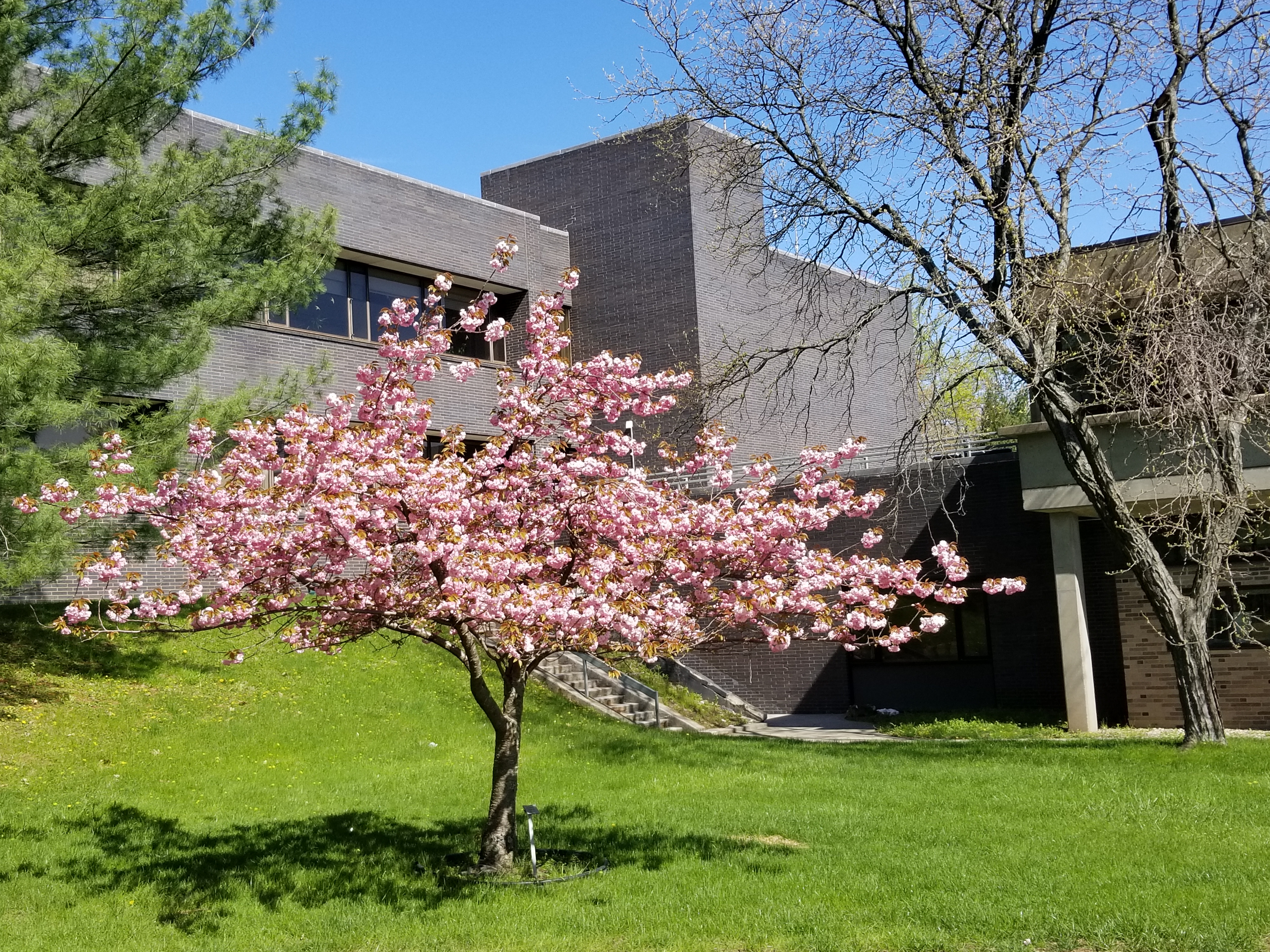Five years ago, and nearing retirement from a multi-decade federal career, Patricia (Pat) Riley '76NRS decided to "pay it forward." In recognition of the education and career opportunities provided to her by Columbia's School of Nursing, Pat arranged to allocate a portion of her federal annuity retirement plan to Columbia Nursing's building and student scholarship fund.
“This is a very easy way for me to give,” says Pat. “I have enough from my government retirement to be comfortable, so using the annuity for my gift to Columbia makes a lot of sense. This is one of the benefits of planning for your own future; I thought I might need the annuity in retirement, but it turns out that I don’t—and I feel very strongly about ‘paying it forward’ to Columbia.”
Peace Corps volunteer work leads to a decorated nursing career
Pat's interest and commitment to Columbia Nursing date to 1973. As a Peace Corps Volunteer assigned as a director of a rural community social center in West Africa, she worked for the Senegalese Ministry of Health. While serving a three-year stint in Senegal, Pat became interested in nursing and global health—and more specifically invested in improving the health of women and children. Noting her interest and enthusiasm in these parallel career tracks, Pat's Peace Corps doctor, Dr. Jim Kane, encouraged her to pursue an education in nursing, public health, and nurse-midwifery. He noted that she would be well-suited for the undergraduate nursing program at Columbia University.
At the time, Columbia's nursing program was unique in that their curriculum was tailored for students like Pat, who already had an undergraduate degree in a different field (i.e., history), but who later decided to seek a career in nursing. Following graduation from Columbia Nursing in 1976, Pat’s professional nursing degree led to a 40-year career with the U.S. Public Health Service (USPHS), and subsequent graduate education at the Johns Hopkins School of Hygiene Public Health (known now as the Bloomberg School of Public Health) in public health and nurse-midwifery.
As a Commissioned Officer in the USPHS, Pat served in multiple assignments within various Public Health Service agencies. In her initial federal appointment as a National Health Service Corps loan recipient Pat staffed the OB-Gyn Unit at the Gallup Indian Health Hospital in Gallup, New Mexico as labor and delivery nurse. A few years later, she was appointed as a community public health nurse in the Chinle Service Unit, Chinle, AZ, on the Navajo Reservation. Many of her home visitations involved assessing and caring for pregnant and newly post-partum women and required a Navajo interpreter/driver, who assisted with home visits in the more isolated areas of the Reservation.
After receiving graduate training in midwifery and public health, Pat returned to the Navajo Nation and staffed the Tuba City Indian Hospital, located in the western region of the Navajo Nation, as a clinical nurse-midwife. During this time, Pat met and married her husband, an environmental health officer assigned to the Navajo Reservation with the Indian Health Service. They will celebrate their 40th wedding anniversary later this year.
Subsequent career assignments led to appointments as a state (North Carolina) and Southeast Regional Maternal Child Health Consultant with HRSA's Bureau of Maternal and Child Health, and finally with the U.S. Centers for Disease Control and Prevention. Over the last 20 years of her career, Pat worked exclusively in global health—mainly in sub-Saharan African, training African nurses and other health professionals in HIV-AIDS treatment and health services and programmatic advances. Her contributions in global health include designing, implementing, and evaluating one of Africa's most advanced health workforce information systems. Launched in 2002 in Kenya, this project transformed the country's nursing personnel system of hard copy documents into one that was accurate, computer-based, accountable, and sustainable. The project eventually expanded to encompass other health cadres (e.g., physicians, dentists, laboratory technologists, pharmacists, clinical officers, and other allied health professionals). This transformation of the health workforce reporting systems has improved compliance with licensure registration, more equitable workforce deployment, and facilitated health professional recruitment and salary support. It also led to the replication of similar systems in half a dozen African countries.
Another global project Pat initiated with her team members involved designing, implementing, and supporting the African Health Professions Regulatory Collaborative for Nurses and Midwives (ARC). This initiative, funded by the President's Emergency Fund for AIDS Relief (PEPFAR) supported a sub-Saharan regional nursing regulatory initiative. The five-year project, which initially encompassed 17 countries in east, central, and southern Africa, eventually expanded to include nursing leaders from the West African countries of Ivory Coast, the Democratic Republic of Congo, and Cameroon. Numerous peer-reviewed papers and scientific presentations have documented the impact of this regional collaboration. ARC's approach of facilitated south-to-south cooperation serves as a model for advancing nursing practices and professional leadership.
While employed at CDC, Pat served as adjunct faculty with Emory University's Lillian Carter Center for International Nursing. Her inductions into Sigma Theta Tau International (the Honor Society of Nursing), as a Fellow in the American College of Nurse-Midwives, and as a Fellow in the American Academy of Nursing, along with her recognition awards for her federal career, serve as a testament to her professional commitment to nursing.
Paying it forward
In reflecting on her professional journey, Pat readily acknowledges that none of these accomplishments would have been possible without the education, support, and mentorship she received at Columbia's School of Nursing. So, when the School offered her an opportunity to support student nursing scholarships and subsidize their 2017 building fund, Pat eagerly contributed to both. The scholarship, named in honor of her mother, Gloria Thomas Riley, has already help support the academic careers of four outstanding nursing students.
“I really want to thank Columbia for the opportunity to attend nursing school, which gave me this career,” Pat says. “I am really happy with the training and exposure to the health care community that Columbia gave me.”
Pat has enjoyed the School’s annual donor-student get-togethers which offer contributors a unique opportunity to meet scholarship awardees and encourage the next generation of Columbia nurse leaders.
“I am able to meet and talk to the scholarship recipients about their careers,” Pat says. “I encourage them. I tell them: You go to Columbia for a career, it definitely pays off.”
Pat's donation to the School of Nursing building fund supports the creation of a Lactation Room within the School's new facility. As a new mother, Pat recalled the inconvenience of not having a dedicated place at work while nursing her infant son. This experience galvanized her desire to provide funding for a dedicated lactation room that could benefit new mothers in Columbia’s student and faculty population.
In 2019, Dr. Lorraine Frazier, Dean of Columbia's School of Nursing, invited Pat to join the Columbia School of Nursing Board of Visitors. These semi-annual meetings provide routine opportunities for Pat to remain engaged with the School's curriculum and development. Most recently, Pat agreed to join the 1754 Society's Participation Drive and represent the School of Nursing, hoping that her story might motivate other alumni to consider their legacy and how they, too, can pay it forward.




